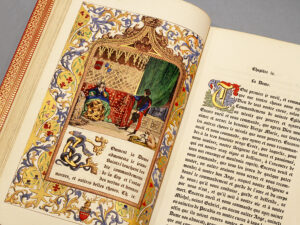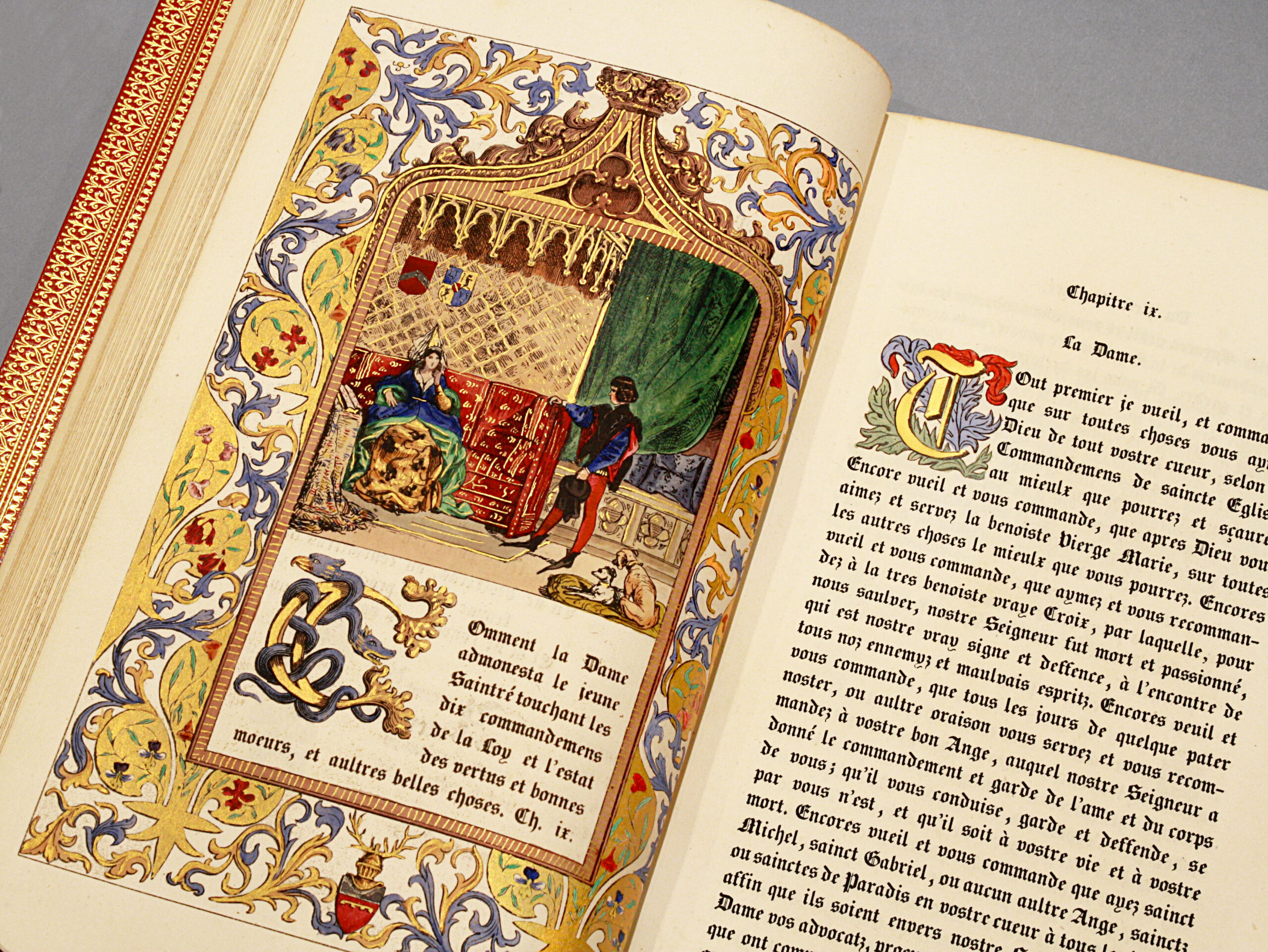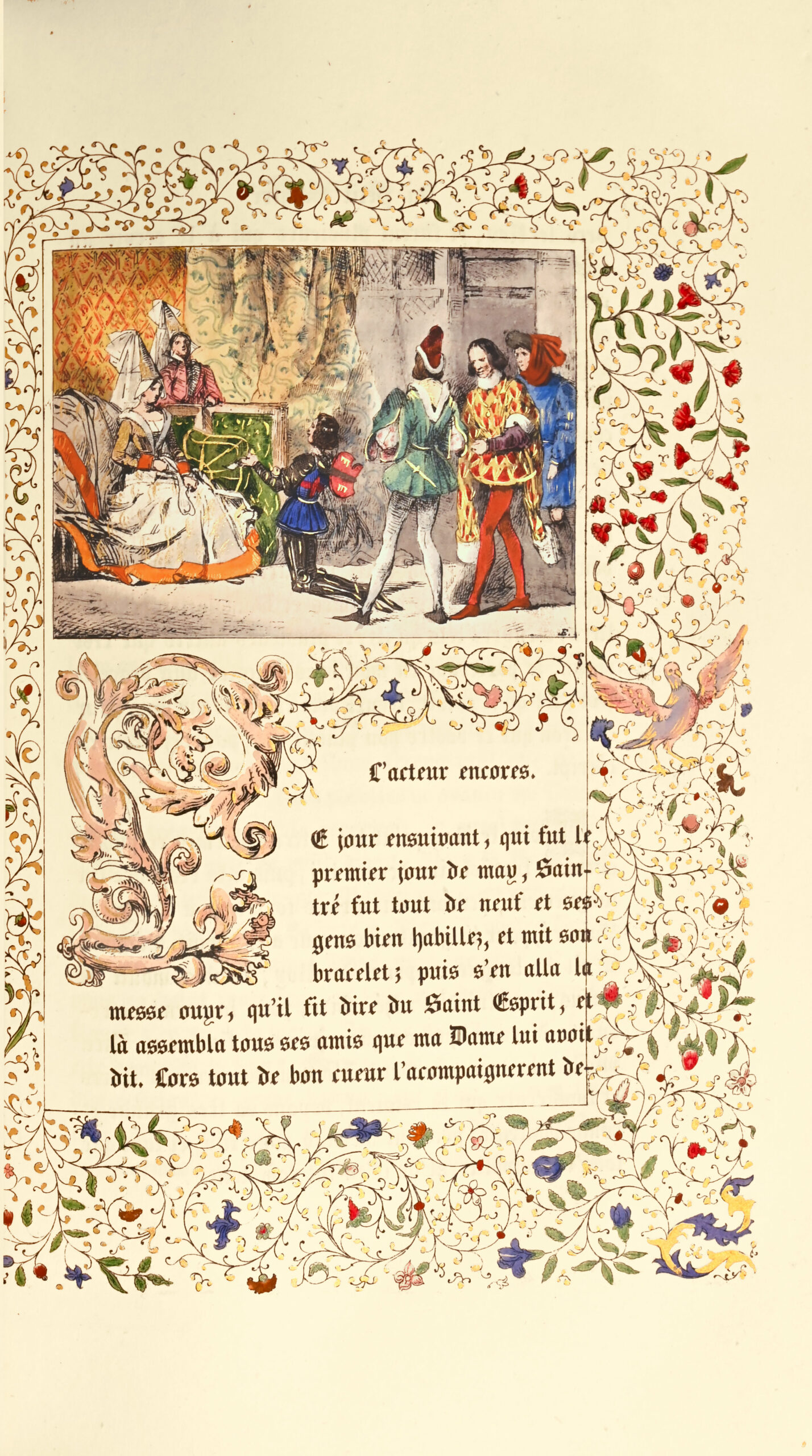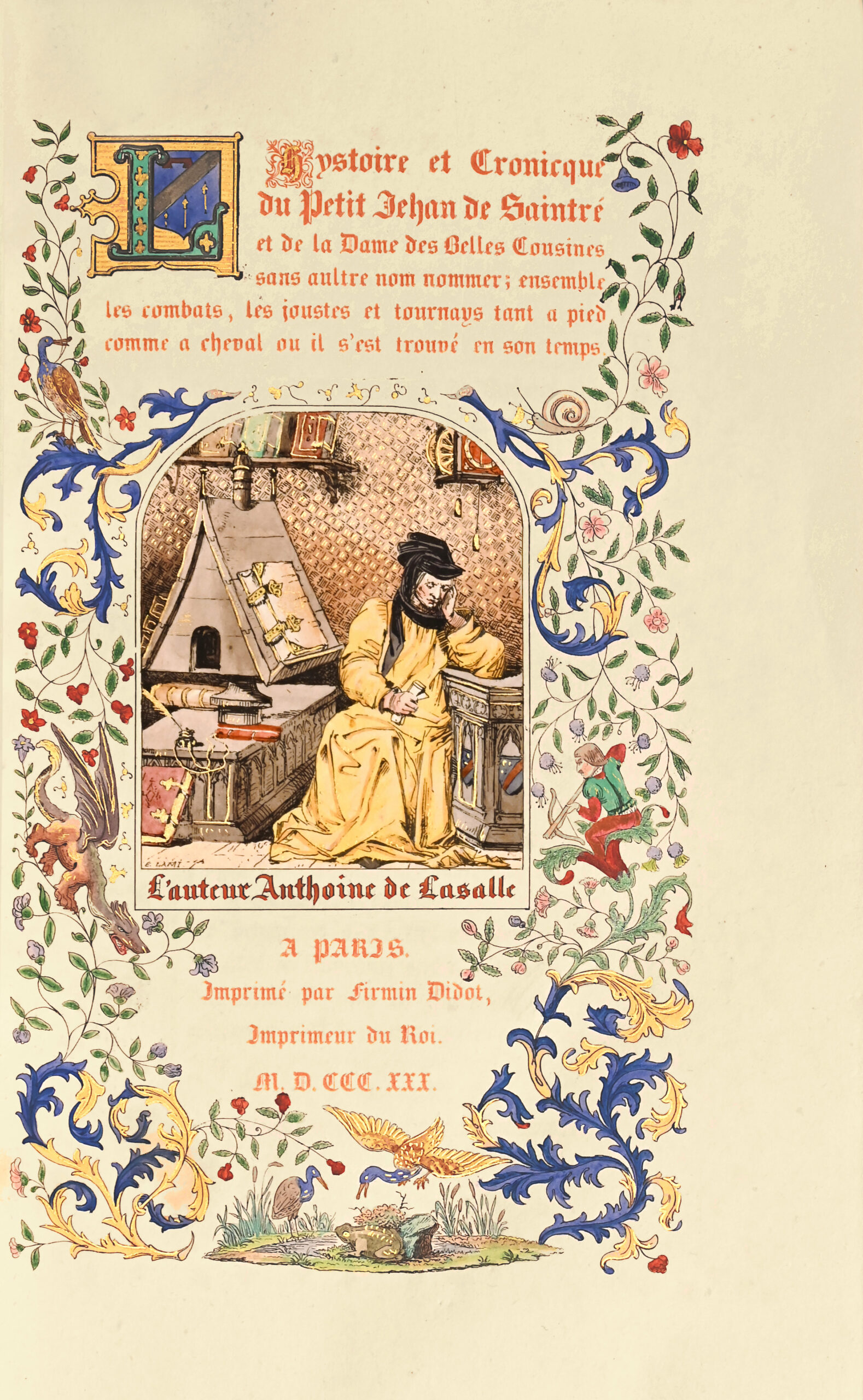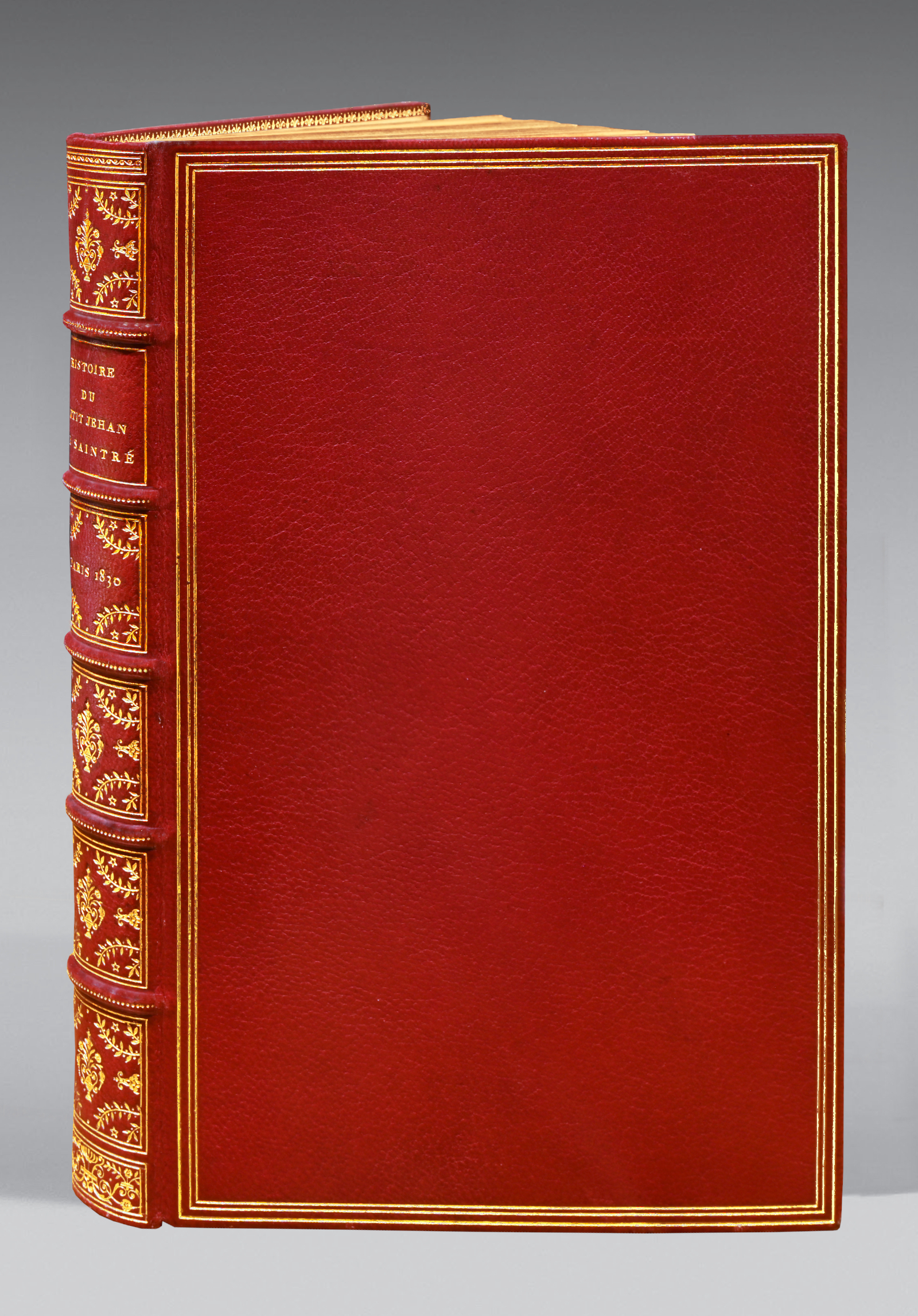Paris, Firmin Didot frères, 1830.
4to [237 x 145 mm] of (2) ll., 7 pp., (1) illuminated title, ccclxix pp., (7) ll. of table, 36 pp., (1) l. out of pagination with a full-page illuminated engraving, 3 illuminated engravings in the text.
Bound in red morocco, triple gilt fillet around the covers, spine ribbed and richly decorated, large inner gilt border, edges gilt. Slipcase. Binding signed Cuzin.
First issue, limited to 250 copies, of this superb illustrated edition of the Little John of Saintré.
Morgand et Fatout, n°8934; Carteret, III, 292; Graesse, III, p.459.
These 250 copies were “printed on a parchment-like paper, especially made for a collection of ancient novelists whose Little John of Saintré will be the specimen.” (Notice).
“Text printed in Gothic characters with vignettes, decorated letters, fleurons after a 16th century edition; around 250 engravings.
Black issue and 200 colored copies. Book quite typical of the Romantic period, charmingly illustrated by Eugène Lamy.” (Carteret).
“There are some copies on parchment paper, with the vignettes and the fleurons colored (60 fr. – 40 fr. Asher).” Graesse, III, p.459.
“Tale by Antoine de La Salle (1388- around 1469) entitled: Histoire et plaisante chronique du petit Jehan de Saintré et de la jeune dame des Belles Cousines. Written in 1456, this work was published for the first time in 1517 and reprinted several times.
A young page, John of Saintré, is attached to the House of the French King John II of France and makes friends with a young lady, la ‘Dame des Belles Cousines’. Knowing that the page isn’t linked to anyone, other than a ten-yêr-old child, the Lady tries to make his education in order for him to become a rêl knight. To do so, she gives him some advices and pushes him to try big. In the mêntime, she is careful that he is dressed properly and provides him with the necessary. Then she has him appointed king’s equerry and incites him to lêve for distant lands. Quick enough, from adventures to adventures and from tournament to tournament, John becomes famous. The Lady giving him more and more difficult tasks, the brave young man sees himself rewarded with honors and charges. But the Lady starts a gallant relationship with a rich abbot. Very upset by this discovery, the handsome knight tries to regain the first place in the Lady’s hêrt. And he will fight until he has unmasked the impudent seducer and forced the Lady to repent. The contrast between the libertine love life of the abbot and John’s feelings bursts in the most shining way, wherês the narration keeps an extremely fast flow, despite the considerations, the dialogs and the various descriptions. The work is the one of a man who admires this harmonious world of the French 15th century, inevitably condemned to decline. The style is always clêr, but manifests some kindness for prolixity, less taken from the sources of a first Renaissance than from the traditional themes. Indeed, the Little John of Saintré is still like the Middle Ages literature, though the author, in the guise of exalting the ending chivalry, mocks it with a delicious and merciless irony.” (Dictionnaire des œuvres, V, p.237).
“Antoine de La Sale (ou La Salle), French writer, born around 1398, dêd after 1461. We know little about his life. He traveled, young, to Italy. He tells us himself that in 1422 he was in Rome. There was an entire generation of spiritual and skeptical writers, qualities that are noticêbly reflected in La Sale’s writings. Among these writers, we will especially mention Poggio, author of the ‘Facéties’, imitated by La Sale in the fiftieth of the ‘Cent Nouvelles nouvelles’, and so often involved in the entire compilation. […]
La Sale composed, in the same place and around the same time (1456), another book whose literary merit isn’t any less important than any of his previous works. L’Hystoire et plaisante Cronicque du petit Jehan de Saintré et de la jeune dame des Belles-Cousines opens, in the manuscripts, with a dedicatory epistle. This epistle is signed by Antoine de La Sale and dated from Geneppe, September, 25th, 1459. The author, in this preliminary, dedicates his work, his masterpiece, to the same Jên d’Anjou, duke of Calabre and of Lorraine, whose he was the private tutor of.” Nouvelle biographie générale, XXIX, pp.711-712.
The illustration is composed of 5 illuminated engravings including 1 full-page and many initial letters, ornaments and fleurons illuminated and enhanced with gold.
Superb copy, one of 200 colored, preserved in its red morocco binding signed by Cuzin.
Provenance : Léon Rattier and Jên Jacobs with ex-libris.
